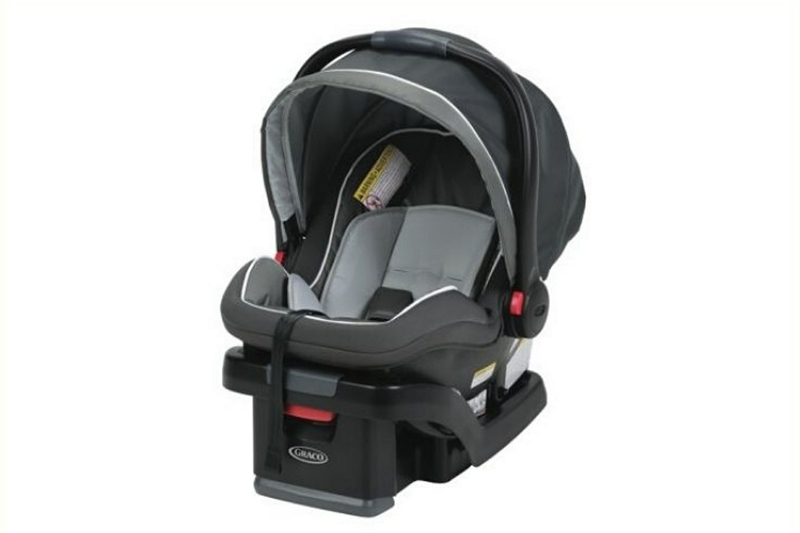In this article, we are going to discuss When To Get A Bigger Car Seat and other aspects of a car seat. When your child outgrows their infant car seat, they are not ready for an adult-sized one.
A bigger car seat is also known as a “booster” because it lifts them so that the vehicle’s lap belt rests across their thighs rather than on their stomachs or necks.

Most kids will need to use some sort of booster until they are at least four feet nine inches tall and around eight years old. As soon as you notice that your little one has grown too big for his/her infant car seat.
Then it is time to get him/her into something more appropriate like a high back booster (also known as rear-facing) or forward-facing model which can support the weight from 30 to 100 pounds in a five-point harness.
How do you secure a car booster seat?
-Move the front passenger seat as far back as possible. If that’s not an option, move it all the way forward and put a car cushion behind it to keep it from reclining.
-Loosen or remove any head restraints so your child can sit more upright in his booster seat than he could with the head restraint adjusted for him (the goal is less than one inch of space between his chest and top of frame).
-Make sure you always use both lower LATCH anchors for each side if your vehicle has them; they’re there specifically to secure highback boosters. If your vehicle has only one upper latch anchor per seating position, make sure its centre guide bar faces up/away from where the child will sit.
-Fasten the lap belt or lower LATCH strap FIRST, then tighten both straps of the harness if your child is under age five (or over 40 pounds).
Buckle any chest clip on his seatbelt before you pull up on the shoulder strap to get it snug for smaller children; he should be able to fit two fingers between his collarbone and seatbelt when properly restrained in a highback booster. An incorrectly installed car seat can become dangerous in an accident!
Only use accessories that are made by the manufacturer of your carseat/booster seat because they’ve tested them together to make sure there won’t be interference issues like loose buckles or twisted belts during an impact.
Why are there no anchors on booster seats?
Booster seats can be a confusing topic at times. Many parents wonder why there are no anchors on the booster seat as they don’t understand how it could stay in place without being strapped down to their car.
The answer is very simple and requires you to take a look under your child when he or she has been buckled into the booster seat for just one minute.
You will quickly see that most, if not all of them have special straps built right onto them! These are commonly called “retractable belts” because they have some sort of mechanism inside that can retract back into itself so it doesn’t get tangled around anything while your little one isn’t using it, but then it can expand outwards so that you can secure the booster seat safely once your child has gotten in.
If this still isn’t clear, look under your vehicle and find where the hooks are on the back of your car seats. You will also see a hook coming from each side of most if not all child restraint systems as well.
These fit right into those little holes mentioned earlier allowing for a much more stable connection between them and their anchors than just strapping them down with belts alone would provide.
How many pounds is a backless booster seat?
A backless booster seat is typically used for children who weigh between 40 and 100 pounds. The majority of backless boosters recommend a maximum weight limit of 80lbs as the safest option, but many brands do not give an exact number on their product descriptions or website other than to describe it as “heavy-duty.”
You must read your manufacturer’s manual before placing a child in this type of restraint, even if they meet these guidelines because every child will be different.
The American Academy of Pediatrics recommends using a belt-positioning device until kids are at least four feet nine inches tall which usually ends up being about eight years old depending on height growth spurts or delays. Parents should also keep in mind that kids don’t have to be in a booster seat until they weigh 40 lbs.
Can my 6-year-old sit in a booster seat?
A child is tall enough to sit in a booster seat when their shoulders are above the top slot of the car’s adult safety belt. This typically occurs between ages four and seven, depending on height and weight.
If your six-year-old isn’t tall enough for the seatbelt alone yet, they can still use it with a high back booster until they meet all requirements for using just a regular seatbelt without any help from an older kid’s seat or harness.
A great option to get them used to not having something extra holding them up while you work towards getting them out of boosters completely is no-back boosters like Joovy Noodle, which do away with little kids’ need for head support by strapping around the child’s upper thighs.
